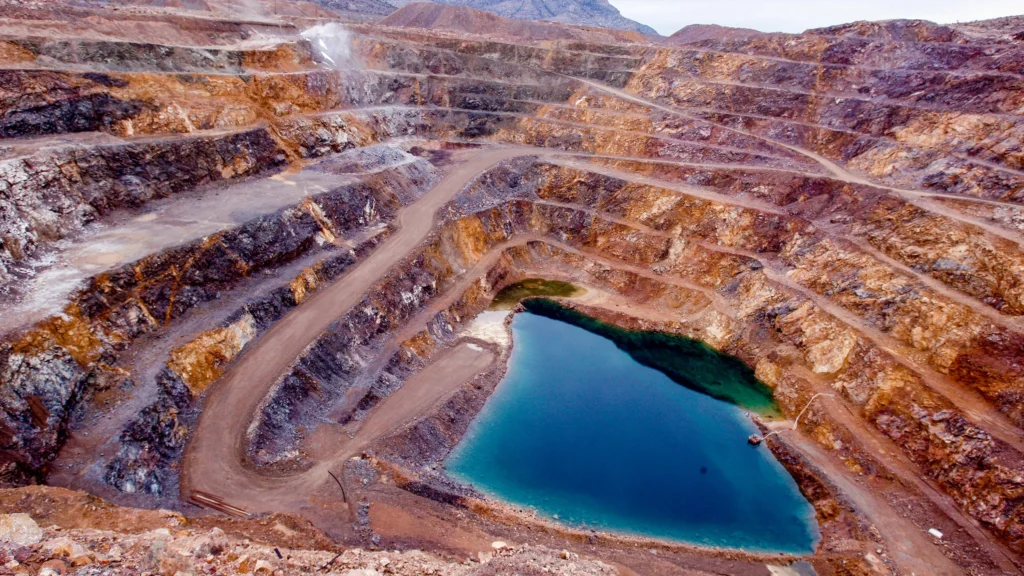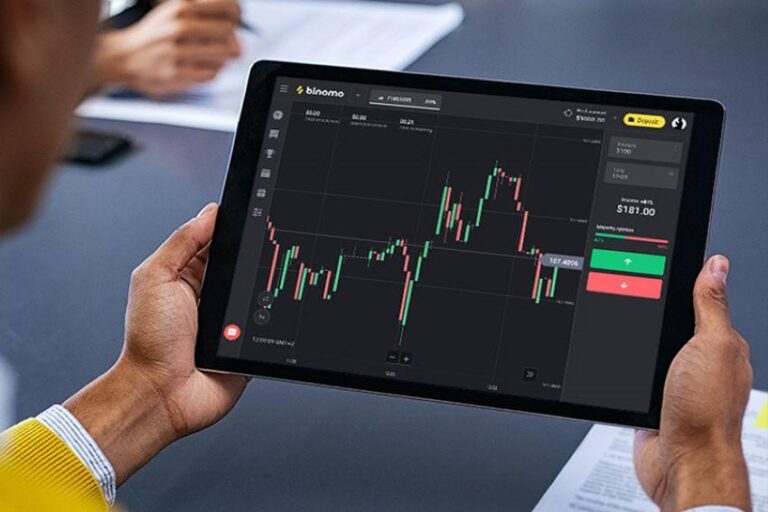How to Invest in Rare Earth Stocks for Maximum Returns
[ad_1]
In a rapidly advancing world where technology, energy transition, and geopolitical strategies play pivotal roles, rare earth stocks emerge as a critical area of investment with the potential for significant returns. These elements, crucial for manufacturing wind turbines, electric vehicles, and various high-tech devices, are at the center of a complex supply chain dominated by countries like China and Australia. The strategic importance of rare earth elements, coupled with the challenges related to their production and processing, has put rare earth metals stocks at the forefront of investors’ minds, making it imperative to understand how to navigate this volatile yet promising market.
This article delves into the intricacies of rare earth elements, exploring the market dynamics influenced by factors such as geopolitics, supply chain challenges, and the increasing demand from sectors like technology and clean energy. It provides investment strategies that encompass stocks, ETFs (Exchange Traded Funds), and insights into identifying promising rare earth elements such as neodymium, dysprosium, and terbium. By understanding the landscape of rare earth stocks, including factors affecting their prices and strategies to mitigate risks, investors can position themselves to capitalize on the opportunities these strategic metals present, from mining companies in the US to Australian rare earth stocks and beyond.
Also read: Revving Up for Takeoff: 3 Hot Flying Car Stocks for 2024.
Understanding Rare Earth Elements
What are Rare Earth Elements?
Rare Earth Elements (REE), also known as rare earth metals or, in certain contexts, rare earth oxides, comprise a set of 17 nearly indistinguishable lustrous silvery-white soft heavy metals. This group includes the fifteen lanthanides on the periodic table plus scandium and yttrium. Despite their name, these elements are not particularly rare but were historically difficult to extract, leading to the term “rare earth”. Scandium and yttrium are grouped with the lanthanides due to their occurrence in the same ore deposits and similar chemical properties, though they have distinct electrical and magnetic characteristics.
Types of Rare Earth Elements
The classification of REEs can vary, but a common method distinguishes them by atomic numbers into light rare-earth elements (LREE), heavy rare-earth elements (HREE), and sometimes middle rare-earth elements (MREE). LREEs include elements with atomic numbers 57 to 61 (lanthanum to promethium), considered light, while those with atomic numbers 62 and above are classified as heavy REEs. This distinction is crucial because of the different properties and uses of LREEs and HREEs in various applications.
Importance in Modern Technology
Rare earth elements are vital for a wide array of high-tech consumer products and defense applications. They are essential components in over 200 products, including cellular phones, computer hard drives, electric and hybrid vehicles, flat-screen monitors, and televisions. The unique properties of REEs, such as their magnetic and luminescent characteristics, make them indispensable for the functionality of many devices. For instance, REE-based magnets are a small fraction of a product’s total weight but are critical for the operation of devices like laptops and electric vehicles. Furthermore, rare earths play a significant role in green technologies, such as wind turbines and electric vehicles, by enabling the production of high-performance permanent magnet motors and contributing to energy efficiency and emission reduction.
Market Dynamics for Rare Earth Stocks Elements
The market dynamics for rare earth elements (REEs) are influenced by a complex interplay of global supply and demand, key producers and consumers, and significant geopolitical implications. These factors collectively shape the landscape of the rare earth market, impacting investment strategies and the availability of these critical materials.
Global Supply and Demand
The demand for rare earth elements is set to increase as the world transitions to clean energy, highlighting the vulnerability of the supply chain. Production of rare earth metals saw a significant rise in 2022, reaching 300,000 metric tons worldwide, up from 190,000 metric tons in 2018. This surge is driven by the growing importance of renewable energy and the popularity of electric vehicles, which rely on rare earths like neodymium and praseodymium. However, the global rare earth elements market is expected to grow at a considerable rate, with a forecasted size of USD 3979.4 million by 2031, indicating a compound annual growth rate (CAGR) of 5.9%.
Key Producers and Consumers
China remains the dominant force in the rare earth market, being the top supplier and having increased its domestic output to 240,000 metric tons of rare-earth oxide in 2023. Despite this, China’s own growing domestic demand may lessen its dominance, driving increased production outside its borders. The United States, as the world’s second-largest producer, and other countries like Australia and Myanmar, also play significant roles in the global rare earth market. Notably, the U.S. defense industry, though a smaller portion of the total demand, highlights the strategic importance of rare earth elements.
Geopolitical Implications
The geopolitical relevance of rare earth elements cannot be overstated, with China’s control over the majority of the market giving these materials outsized influence. China’s near-monopoly in both mining and refining REEs has made most nations and industries dependent on its exports. This dependence has been leveraged by China as a diplomatic tool, notably during the 2010 dispute with Japan and more recent tensions with the U.S., illustrating the strategic use of rare earth exports in foreign policy. Such incidents underscore the critical need for countries like the U.S. to develop alternatives to Chinese supplies to ensure security in the supply of these essential materials.
Investment Strategies for Rare Earth Elements
Direct Investment in Mining Companies
Investors seeking exposure to the rare earth sector can consider direct investment in mining companies actively involved in the extraction and processing of these critical minerals. MP Materials Corp. (MP) stands out as the only domestic company in the U.S. mining and processing rare-earth elements, operating the Mountain Pass mine in California. Similarly, Lynas Rare Earths Ltd. (OTC: LYSCF) extracts rare-earth elements from its high-grade mine in Australia, with both companies receiving backing from the U.S. Department of Defense. Other notable companies include Iluka Resources Ltd. (OTC: ILKAF) in Australia, which is building the nation’s first fully integrated rare-earth refinery, and smaller exploration companies like Rare Element Resources Ltd. (OTC: REEMF) and Texas Mineral Resources Corp. (TMRC).
Exchange-Traded Funds (ETFs)
For those preferring diversified exposure, Exchange-Traded Funds (ETFs) offer an efficient way to invest in a basket of rare earth stocks. The VanEck Rare Earth/Strategic Metals ETF (REMX) is a popular choice, giving investors access to a mix of companies involved in the production, refining, and recycling of rare earth and strategic metals. Another option is the Optica Rare Earths & Critical Materials ETF (CRIT), which focuses on companies across the mining, production, and refining sectors.
Commodity Funds
Investors can also consider commodity funds that focus specifically on rare earth elements and strategic metals. These funds may invest directly in physical rare earth metals or in futures contracts related to these materials, offering another layer of diversification. While specific rare earth commodity funds are less common, the growth in demand for these materials and the strategic importance of rare earth elements in technology and defense sectors suggest potential for new fund offerings in the future.
By exploring these investment strategies, individuals can navigate the complex yet promising market of rare earth elements, aligning their portfolios with the growing global demand for these critical materials.
Identifying Promising Rare Earth Elements
Key Elements to Watch
Rare earth elements such as Cerium, Dysprosium, Erbium, Europium, Gadolinium, Holmium, Lanthanum, Lutetium, Neodymium, Praseodymium, among others, are pivotal in various high-tech and industrial applications. Their diverse uses range from magnets and catalysts to metallurgy, polishing, glass, phosphors, and ceramics. Specifically, neodymium, praseodymium, dysprosium, terbium, and yttrium are critical for permanent magnet applications due to their unique properties like remanence and high coercivity, which are essential for maintaining magnetism over extended periods.
Applications and Growth Projections
- Magnets: Rare earth permanent magnets are expected to be the primary growth market in the next five to ten years, significantly impacting wind turbines and electric vehicles by enabling high-performance motors and contributing to energy efficiency.
- Catalysts: The demand for auto-catalysts is anticipated to rise due to stricter global regulations on vehicle emissions.
- Metallurgy and Polishing: Dysprosium’s role in steel manufacturing and the production of lasers underlines its growing demand as countries aim to improve their steel standards.
- Recycling: With a current recycling rate below 5%, there exists a considerable opportunity for enhancing the supply chain’s sustainability and reducing environmental impacts through increased recycling efforts.
Risks and Considerations
Investing in rare earth elements entails understanding the complex supply chain and market dynamics, including the fluctuation of raw material prices which can significantly affect manufacturers. Additionally, geopolitical factors play a crucial role, with China’s dominance in the rare earth market posing potential supply chain vulnerabilities. Investors should also consider the environmental and sustainability concerns associated with rare earth mining and processing, as these practices often involve environmentally damaging methods. Finally, the technical and financial challenges of bringing new mines into production, such as the need for significant capital investments and the complexity of rare earth mineralogy, should not be overlooked.
Conclusion
Navigating the volatile yet rewarding terrain of rare earth stocks requires a nuanced understanding of the market’s dynamics—from geopolitical influences to the intricate supply and demand balance. This article has provided a comprehensive exploration of the rare earth elements sector, highlighting the strategic importance of these materials in modern technology and the green energy transition. By considering investment strategies in mining companies, ETFs, and commodity funds, investors are equipped with the knowledge to capitalize on the growing demand for these critical materials, where the likes of neodymium, dysprosium, and terbium stand out for their unique applications and growth potential.
The significance of rare earth elements transcends simple market dynamics, touching upon broader implications for national security, technological advancement, and the global shift towards sustainable energy sources. As the world grapples with the challenges of ensuring a stable supply of these critical metals, the opportunity for investors to make impactful contributions to this evolving market is clear. With careful consideration of the risks and strategic approaches to investment, there lies potential for not just financial returns, but also participation in the fundamental transformation of the energy and technology landscapes.
[ad_2]
Source link






